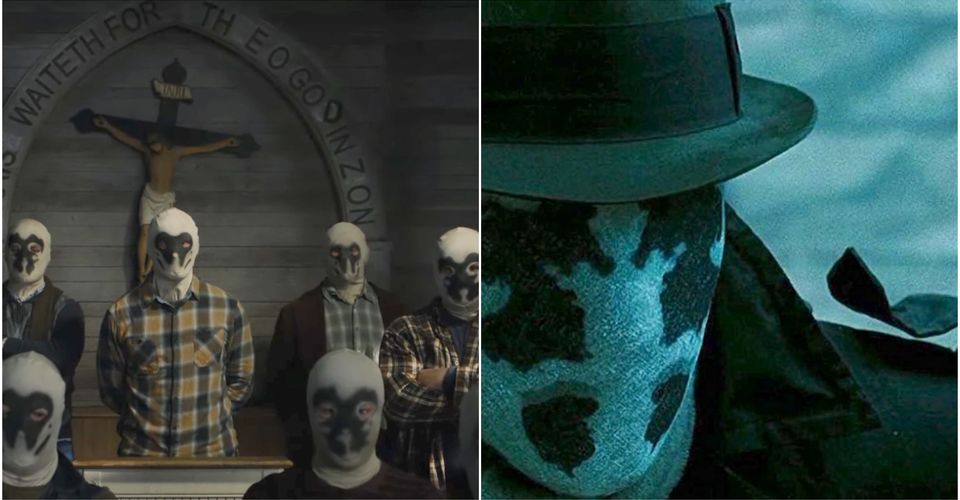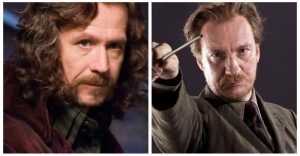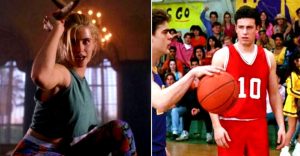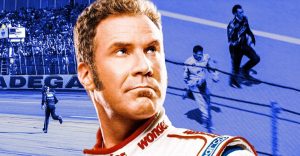5 Reasons Why Zack Snyder’s Watchmen Movie Is The Definitive Adaptation (& 5 Why HBO’s Watchmen Is Better)

A classic of the graphic novel genre, Watchmen has been adapted twice. Which one is better?
You’d be hard-pressed to find a more beloved and revered graphic novel/limited series than Alan Moore, Dave Gibbons, and John Higgins’ Watchmen. Widely acclaimed upon its initial run, the compiled graphic novel has gone on to achieve top-tier status in the world of comic books. In 2009, director Zack Snyder released a divisive big-budget film adaptation. Long thought to be an unfilmable property, Snyder’s film is something of an impressive achievement, even if there are still glaring issues.
Ten years after the film, Damon Lindelof and HBO brought the world a “remix” of the source material that got the world talking Watchmen again. Both renditions have strengths and weaknesses, but one version manages to capture the book just a little bit better.
10 Snyder: Commits To R-Rated Material

There have been plenty of unfortunate cases where an adults-only graphic novel gets toned down, and often ruined, for cinematic adaptations. Watchmen contains plenty of graphic violence, language, sexual assault, and nudity. However, these things exist organically within Moore’s story, moving the narrative pieces along until the puzzle is completed. Snyder’s film thankfully doesn’t shy away from the harder elements of the novel, instead embracing them. This risky choice allows the film to more accurately capture the complexities of the source material. Much like the book, the film opened the door for more adult-oriented superhero films to be released.
9 HBO: Hooded Justice

One of the more brilliant aspects of the miniseries was how it weaved its own story in seamlessly with the events of the graphic novel. Perhaps the finest example of this integration is the show’s backstory on Hooded Justice. Originally a significant, but minor, character in the original comics, Lindelof and his writing team assembled a timely and emotionally satisfying arc for the character that now illuminates his presence in the original material.
A prime example of the way the show manages to work in tandem with the comics, Hooded Justice’s storyline provided a much-needed understanding of the mysterious character.
8 Snyder: Rorschach

A fundamental part of the Watchmen universe, Rorschach/Walter Kovacs is one of the most complicated characters in the novel. Both admirable and scary due to his total commitment to his own morals and ideals, Kovacs serves as the primary source of exposition in the story as he unravels the conspiracy at work. Snyder’s film does a great job of presenting the character with all of his eccentricities and idiosyncrasies. Additionally, Jackie Earle Haley is an inspired piece of casting, his performance brings something invaluable to the film and truly brings the famed vigilante to life.
7 HBO: Europa

What began as a strange subplot initially soon proved to be a delightful merging of fan service and truly great character development. The HBO series chose to bring back Adrian Veidt, played here by Jeremy Irons, as a manor lord trapped in a world where he is perpetually unchallenged.
Continuing Moore’s deep ruminations on the nature of the superhero, the price of hyperintelligence, and the banality of superiority, the entire Europa storyline Lindelof presented was nothing shy of genius. Eventually, the origins of Veidt’s heavenly prison are traced back to a certain glowing blue demigod.
6 Snyder: The Structure

No doubt one of the riskiest decisions made by Snyder and screenwriters David Hayter and Alex Tse, the Watchmen film maintains the elaborate structure of the comics. Jumping between timelines, characters, planets, and all other things in between, the sprawling narrative takes on many detours and seemingly tangential subplots. However, the film, much like the novel, manages to bring all of the tentacles back in during the final act. Although the ambition of the film threatens to collapse it, the strength of the source material is enough to keep it standing.
5 HBO: The Social Commentary

Part of what makes the original book transcend its comic origins to be considered great literature is the fact that it had something to say. It not only existed to entertain and deconstruct the superhero archetype but also to ask broader questions about ethics and the responsibilities of the citizen to protect the greater whole.
Likewise, the HBO miniseries has a lot on its mind beyond capes and masks. A throttling and unrelenting look at racism in America, the series skillfully oscillated between the serious and uncomfortable discourse on race relations with the duties of its many narratives.
4 Snyder: The Tone

There is no question about it, Watchmen‘s story is pitch black. Moments of humor are present, but few and far between stretches of grim and brutal scenes of heartbreak and trauma. The tone of the film largely matches the tone of the graphic novel, Snyder’s tendencies proving to be an asset in this case. Visually and dialogue-wise, the film is a faithful adaptation of the dreary mood of the source novel. A fun action romp this is not, thankfully Snyder allows room for the serious and more contemplative moments as well, giving the film a natural pace on par with the comics.
3 HBO: The Squid

Even as Snyder’s film stays mostly faithful to the original novel, a glaring change was the specifics of Veidt’s machiavellian scheme to save the world. Thankfully a decade later, fans got to see the dreaded giant squid that serves as the ultimate threat Veidt conceives of in the comics.
Matching some of the original comic panels exactly, a flashback episode of the show gives us a glimpse at the monstrous tentacles lodged into the sides of buildings. Squids continue to prove significant all throughout the show, something that Snyder’s film neglected to attach any significance to in his bland rendition of Veidt’s destructive “Hail Mary!”
2 Snyder: Rorschach’s Journal

Something the HBO show could never recreate due to it being a sequel of sorts, the 2009 film accurately incorporates Rorschach’s infamous journal. As the show’s events are kickstarted by the journal, Lindelof acknowledges its importance, but unfortunately does not allow us to hear it in its author’s voice, as Snyder’s film does. Rorschach’s recitation of his journal allows for the audience/reader to understand and feel what he does, which gives the content depth and definitive perspective. The inclusion of the journal is truly one of the film’s great triumphs.
1 HBO: Dr. Manhattan

In a lot of ways, the success of adapting Watchmen rests on how you do the big blue guy. One of the most iconic characters of the property, Dr. Manhattan/Jon Osterman is a complicated mess of a man and a god sharing an existence. It’s heavy stuff, and while Snyder and Billy Crudup came up with a fairly decent version of the character, there is simply no touching the way Lindelof’s show did Dr. Manhattan. A presence throughout the entirety of the series, he only physically appears towards the latter half, but his limited screentime is without a doubt the best part of the show, and furthermore, why HBO’s miniseries succeeds more than Snyder’s work in 2009.
About The Author

















